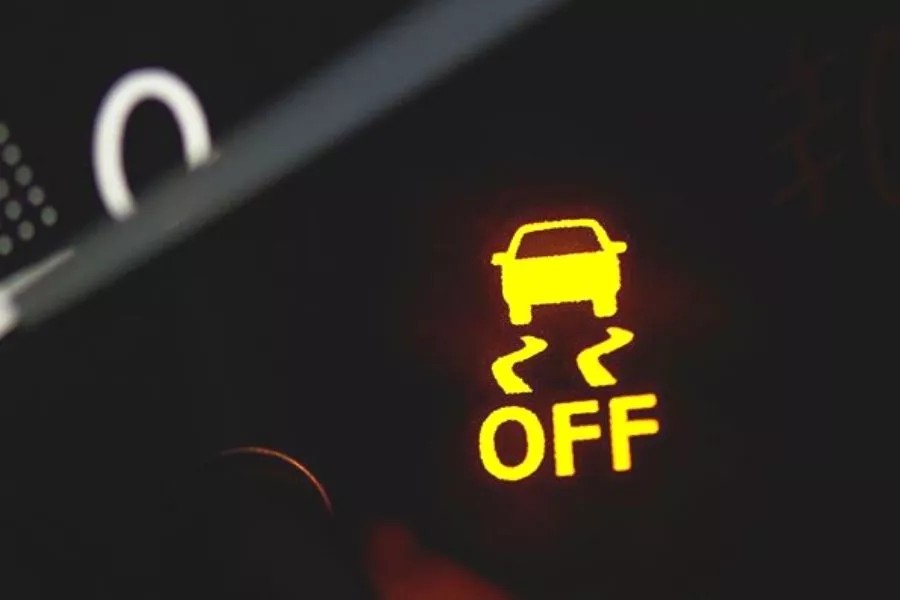The modern car dashboard is a constellation of lights, each with a specific meaning. While some illuminate the gauges, others signal the status of various features and components. Among these, the Car With Swervy Lines symbol often causes confusion. What does this indicator signify, and should you be concerned if it illuminates?
This light indicates your car’s stability control system is active.
Understanding the Car with Swervy Lines Light
The car with swervy lines symbol represents your vehicle’s Electronic Stability Control (ESC), also known as traction control. When this light is on steadily, it indicates that the system is active and functioning normally. In some vehicles, the light may flash intermittently while the system is actively working to maintain traction.
Conversely, if the symbol is illuminated and accompanied by the word “OFF,” or if it doesn’t illuminate at all when you start the car, it means the system is deactivated.
A stability control light indicating the system is off (left).
Many cars allow drivers to manually toggle the ESC system on or off with a button, usually featuring the same swervy lines symbol. However, if you haven’t deactivated it and the light remains on continuously, it could signify a problem with the system. In such cases, it’s crucial to have your car inspected by a qualified mechanic.
What is Stability Control and How Does It Work?
Stability control is a crucial safety feature designed to help drivers maintain control of their vehicles in challenging conditions. It works by automatically applying the brakes to individual wheels and adjusting engine power to prevent skidding and loss of control. The system utilizes sensors to monitor wheel speed, steering angle, and vehicle yaw (rotation around a vertical axis).
When the system detects a loss of traction or deviation from the intended path, it intervenes by applying braking force to specific wheels and, in some cases, reducing engine power. This helps to counteract oversteer (rear-end sliding out) and understeer (front-end plowing wide) situations, keeping the car on its intended course.
Stability control is especially helpful in adverse conditions like wet roads.
Modern ESC systems operate with incredible speed and precision, making minute adjustments to maintain stability without the driver even noticing. This technology is particularly beneficial in slippery conditions like rain, snow, or ice, and can significantly reduce the risk of accidents. ESC often works in conjunction with the Anti-lock Braking System (ABS) to optimize braking performance and prevent wheel lockup.
Advanced Stability Control Systems
In more advanced systems, stability control can even override the ABS and momentarily lock the wheels to provide maximum grip in certain situations. Some systems can also interact with the car’s differential lock and four-wheel-drive system to further enhance traction and control.
Some cars have a button featuring the swervy lines symbol to control the stability control system.
Conclusion: The Importance of Stability Control
The car with swervy lines symbol represents a vital safety feature that can significantly improve your driving experience and safety on the road. Understanding its function and knowing what to do if the warning light illuminates is essential for all drivers. While some experienced drivers might choose to deactivate the system in specific situations, for everyday driving, keeping stability control enabled is highly recommended. It’s a valuable technology that can help prevent accidents and keep you safe behind the wheel.

